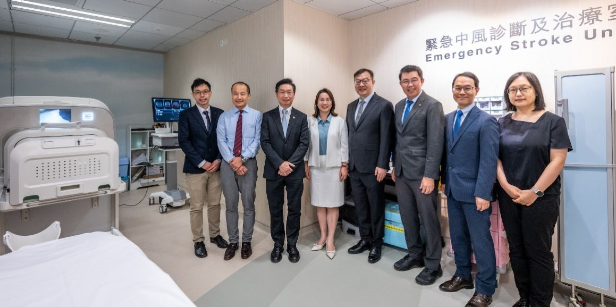
The Chinese University of Hong Kong (CUHK)’s Faculty of Medicine (CU Medicine) and the Prince of Wales Hospital (PWH), in collaboration with the Chinese Stroke Association and the Beijing Tiantan Hospital, affiliated to Capital Medical University, have introduced the use of 0.23T low-field magnetic resonance imaging (MRI) technology in Hong Kong as part of a nationwide, multicentre clinical trial of a new one-stop acute stroke management model, the Emergency Stroke Unit (ESU).
Since its launch in August this year, the team has performed low-field MRI examinations on over twenty patients at PWH with promising results. The research team believes that this innovative technology has the potential to significantly improve the diagnostic and treatment processes for acute stroke patients. The clinical study is divided into two phases, with a target of enrolling 200 patients. CUHK and PWH are participating in this 18-month clinical study as Hong Kong’s first pilot site.
The 0.23T low-field MRI system offers several advantages over the standard 1.5T or 3.0T MRI systems, including greatly enhanced flexibility, lower cost, smaller footprint, improved safety, no special shielding requirements, fewer metal object restrictions and standard power supply connectivity.
The research team at the Beijing Tiantan Hospital, affiliated to Capital Medical University found the low-field MRI demonstrated over 96% accuracy and 97% sensitivity in detecting ischemic lesions, compared to the 3.0T MRI. Additionally, compared with CT scans, the low-field MRI technology has higher certainty in visualising small or early ischemic changes. This breakthrough low-field MRI technology not only offers greater flexibility compared with traditional systems but also holds immense potential to significantly improve the diagnostic and treatment pathways for stroke patients.